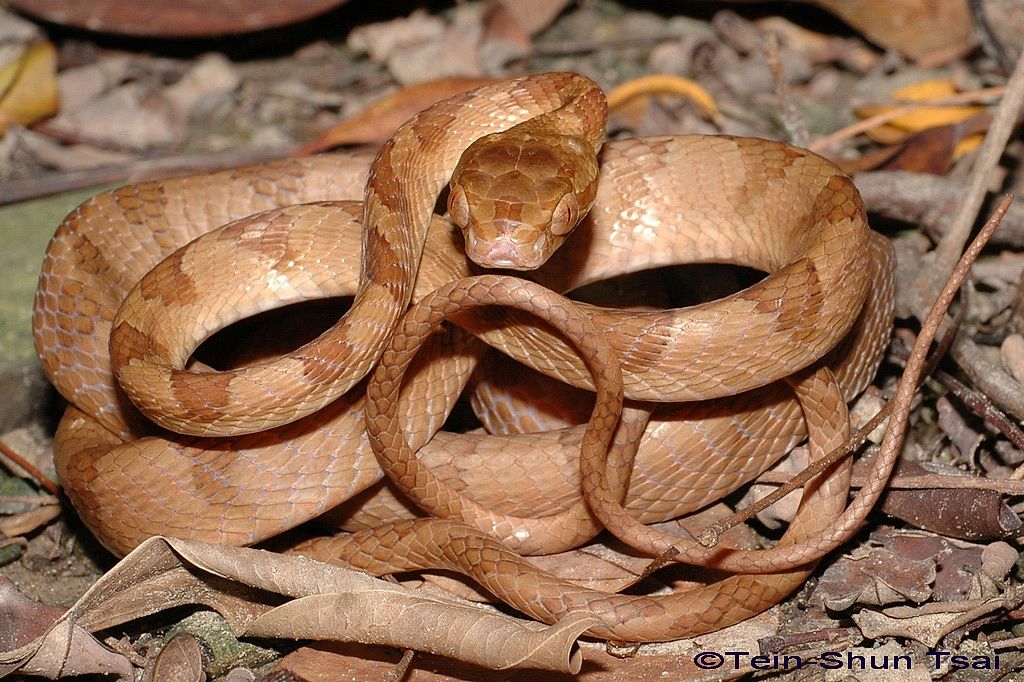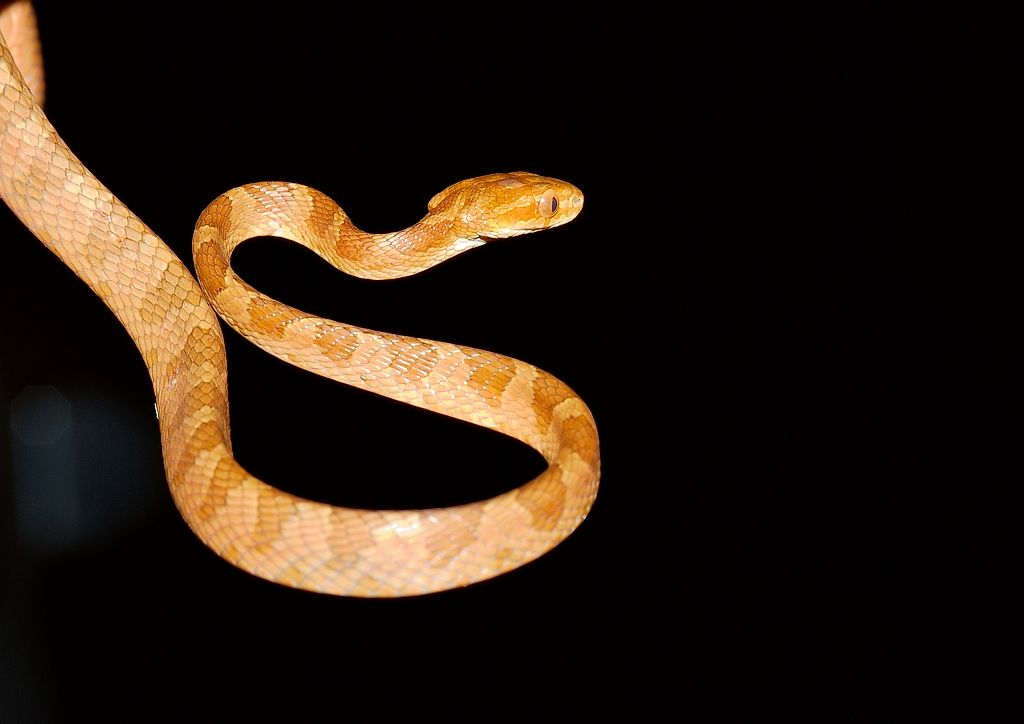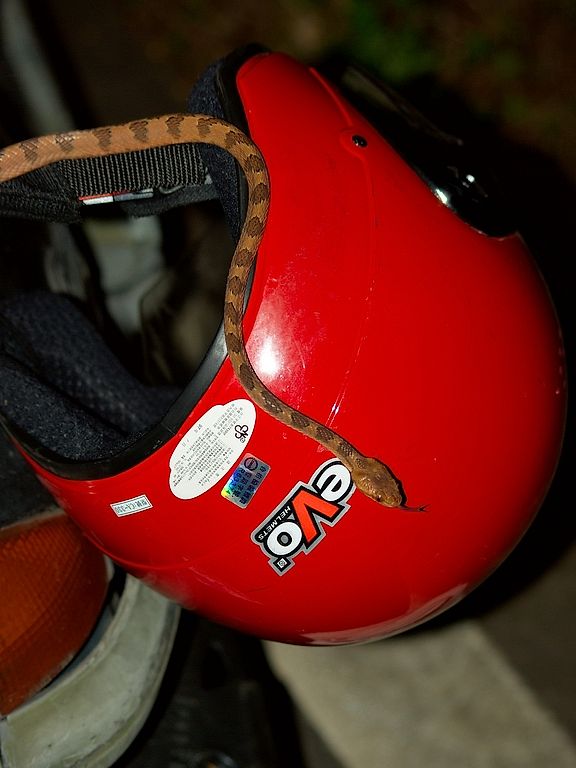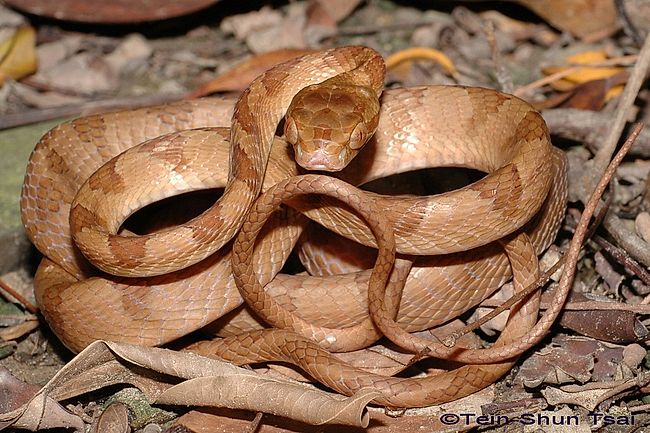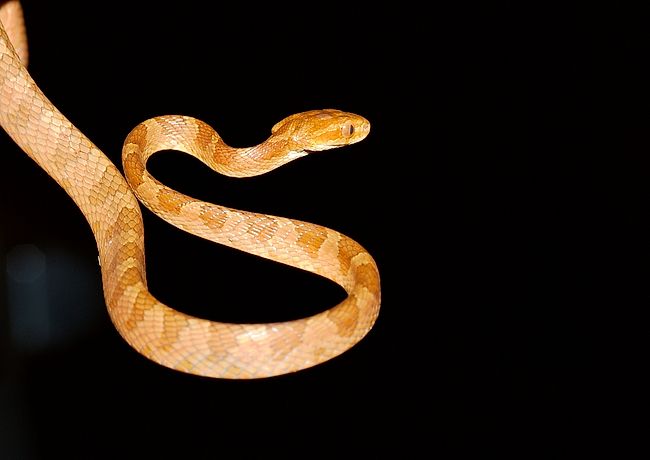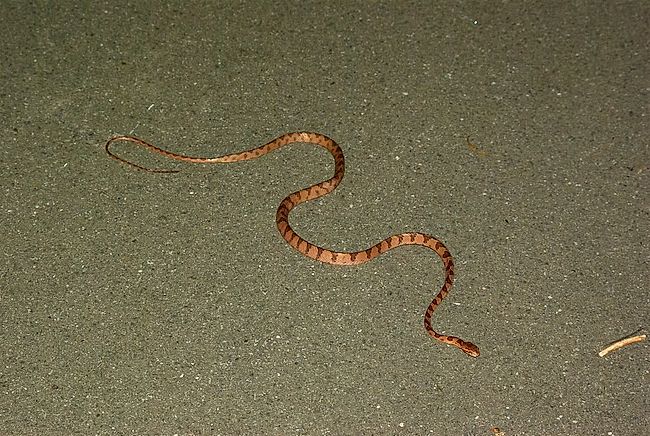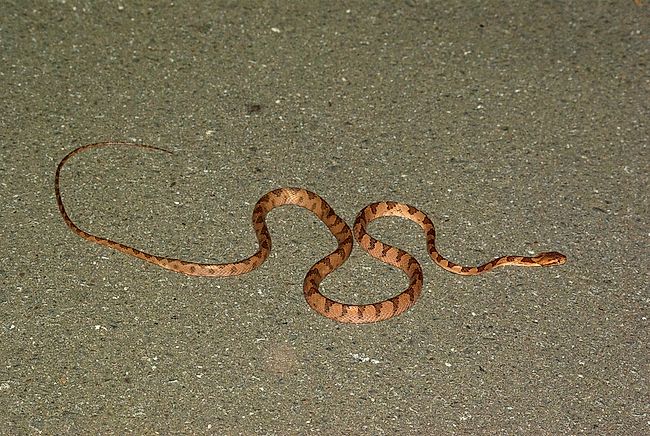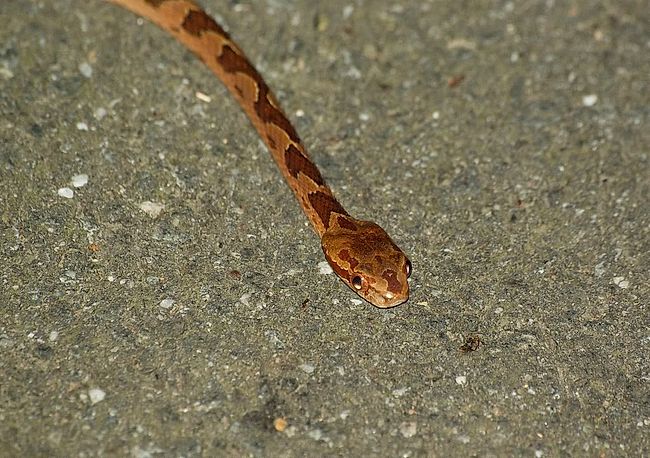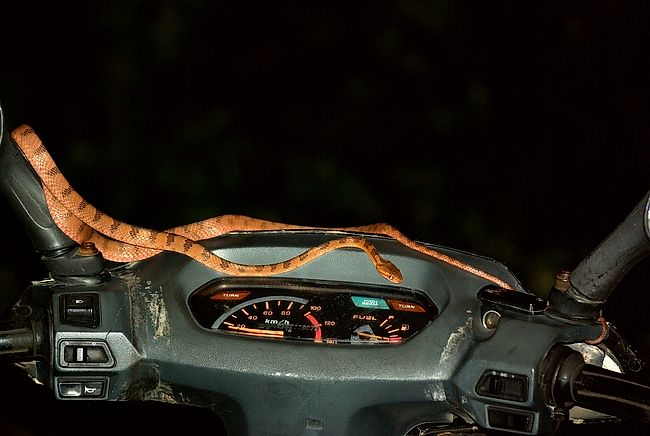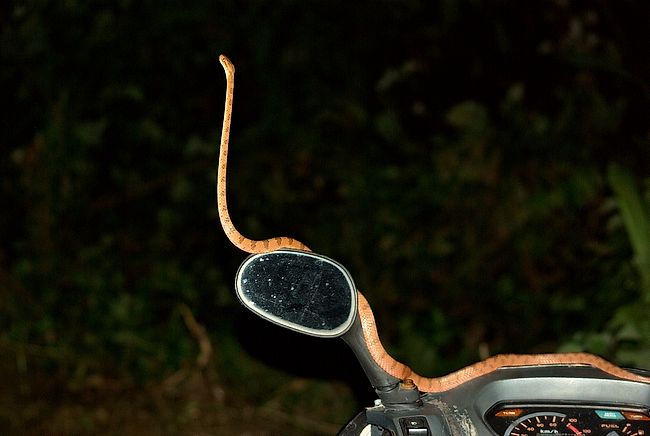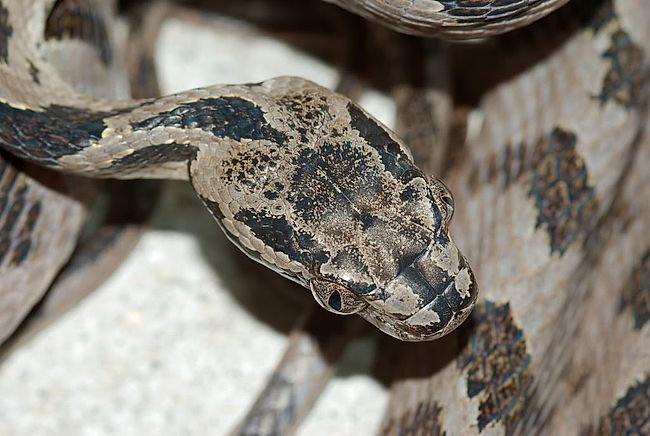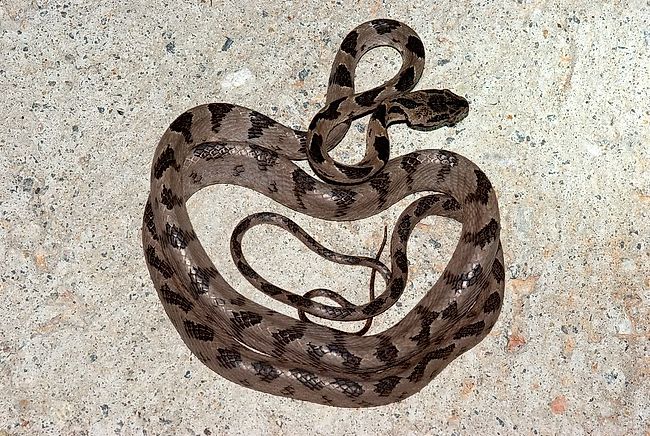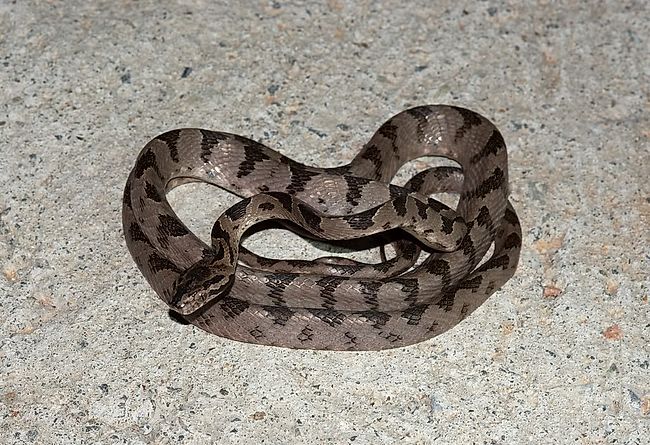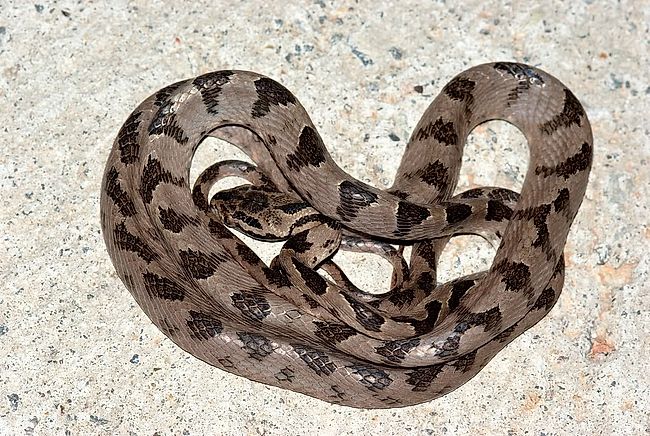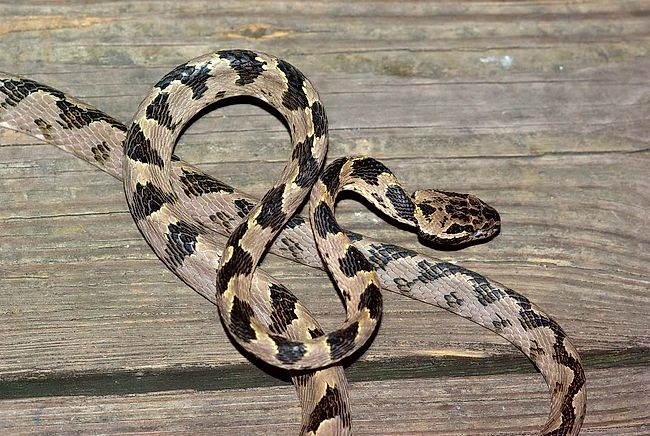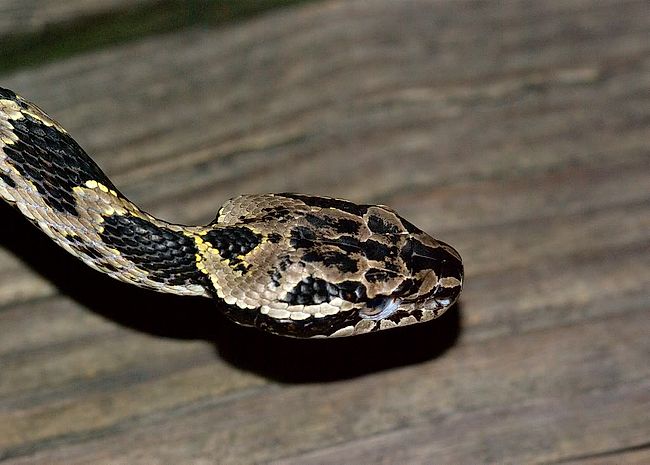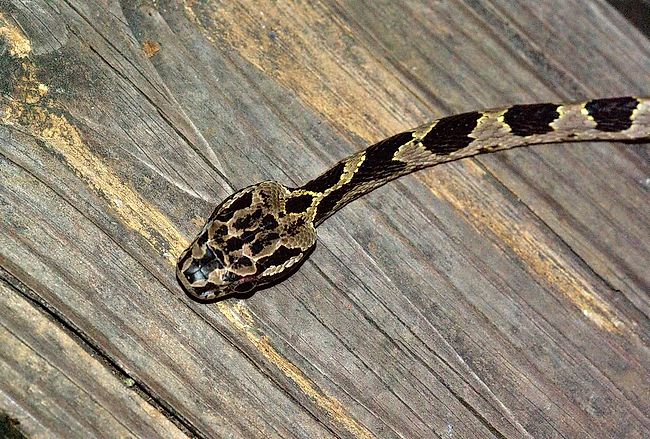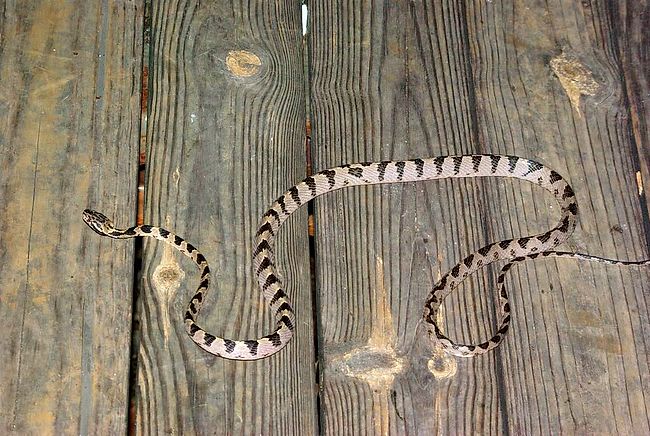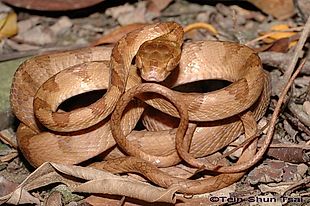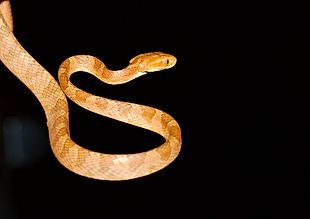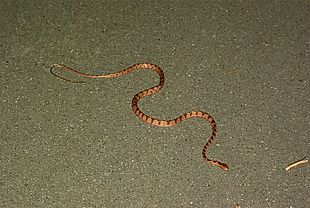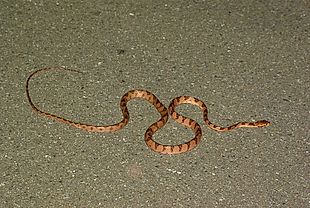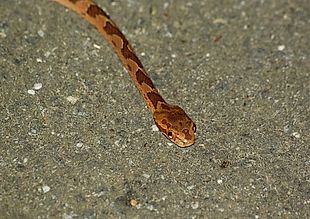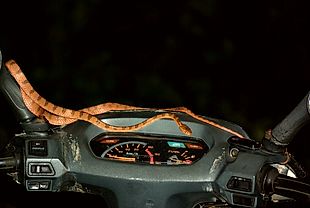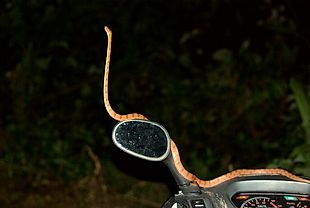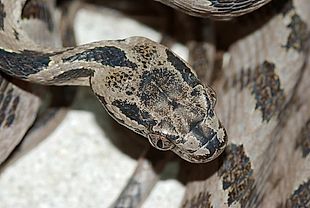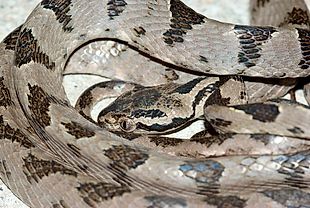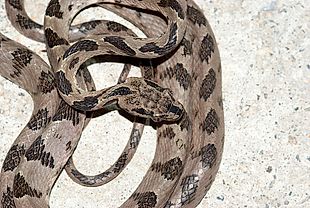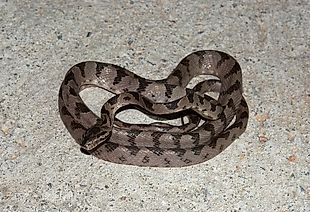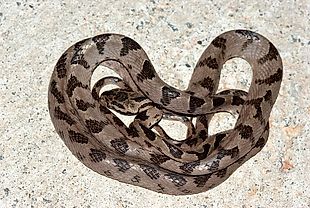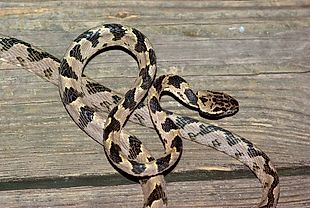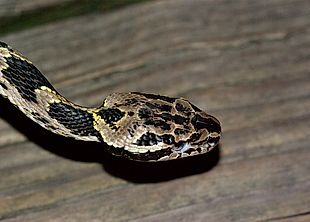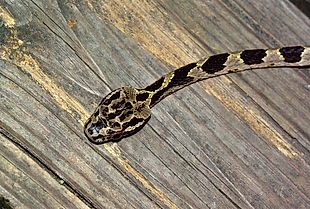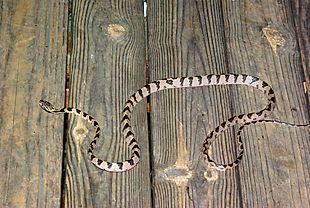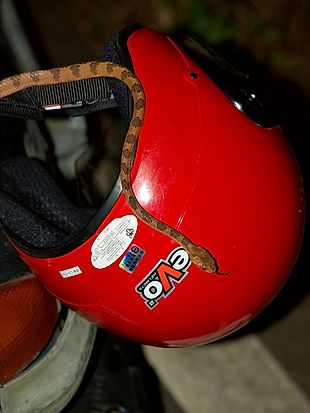Boiga kraepelini
(Square-headed) Cat Snake
大 頭蛇 (da4tou2she2)
Status: Not Protected
Mildly venomous
Field Reports
Family
Colubridae, subfamily Boiginae
Max. length
160 cm
Occurrence in Taiwan
Throughout Taiwan up to 1000 m altitude. Common.
Global Distribution
South China (Hainan, Sichuan, Guizhou, Anhui, Fujian, Gansu, Guangdong, Guangxi, Hunan, Jiangxi, Zejiang), Taiwan, Vietnam.
Description
This snake is long and thin; total length up to 160 cm. There are 15-25 (21 at mid-body) rows of scales, which are smooth (and oblique anteriorly). Head, with rounded snout, is twice the width of the neck and distinctly separated from neck; body is highly slender and laterally compressed; tail is long. Eye is very large, bulging from head; iris is dirty yellow to yellow copper, dappled with coarse diffuse black, and pupil is elliptical, black, and surrounded by ring of dirty yellow. Tongue is flesh-colored and darkened by scattered flecks of black, with fork tips lighter than stem. Fangs at the end of upper jaw are enlarged and grooved. Upper head is brown to copper brown, usually with a dull rusty lateral stripe extending from eye to corner of mouth and may with extra designs of dull rusty among dorsal shields. The labials are lighter in color. Upper body and tail are usually amber or brown to copper brown, with irregular cross bands of brown to diffuse black along the vertebral line. The cross bands are more prominent in anterior third of body. Ventral head is white to light gray, with diffuse light brown. Ventral body is usually uniform in color, light to yellow gray and mixed with white to give marbled effect. The light areas on ventral scales arrange to form longitudinal line near latero-ventral junction. Anal scale is divided and subcaudals are paired.
There are color variations in this species that are particularly marked in immature snakes. Although most specimens are sand-colored to mustard-bronze with slightly darker dorsal patterns, a few individuals are light to dark with prominent dorsal designs of dark brown or chocolate, often rimmed with golden-yellow lines.
Biology & Ecology
This cathemeral (diurnal or nocturnal) rear-fanged (= opistoglyphous, see footnote (1)) snake inhabits trees in mountainous areas. It is a typically slim arboreal species with a large head, large eyes, and a strong prehensile tail made for life in trees, but the snake occasionally comes to the ground to cross roads, where it is easily killed by vehicles due to its length. It preys on small birds or lizards and sometimes bird eggs. Females produce 5-14 eggs of approximately 4x1.7 cm per clutch in summer. This snake can be quite irritable and aggressive. It will often form defensive coils and strike in viper-like fashion when threatened.
As with most other rear-fanged species, not much is known about B. kraepelini's venom. There are no reports of deaths or severe bites, but there may be swelling, redness and aching muscles in the bite area.
Etymology
The English common name "Cat Snake" alludes to the the cat-like pupils that are prominent in all members of this genus.
Boiga: in honor of German herpetologist Heinrich Boie (1784-1827), who described the first three species in the genus (originally as Dipsas), that were later placed in the new genus Boiga.
kraepelini: in honor of German naturalist Karl Kraepelin (1848-1915), director of the Natural History Museum in Hamburg, Germany, from 1889-1914.
The Chinese name 大頭蛇 (da4tou2she2) literally means "big-headed snake".
Footnotes
(1) "Opisthoglyphous snakes are similar to aglyphous (fangless) snakes, but possess weak venom, which is injected by means of a pair of enlarged teeth at the back of the maxillae (upper jaw). These "fangs" typically point backwards rather than straight down, possess a groove which channels venom into the prey, and are located roughly halfway back in the mouth, which has led to the vernacular name of "rear-fanged snakes". (Source)
Further Info
